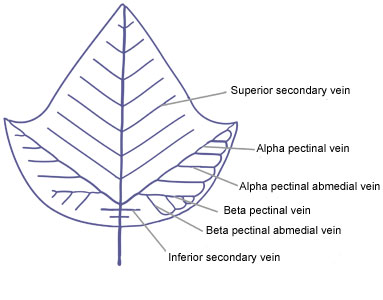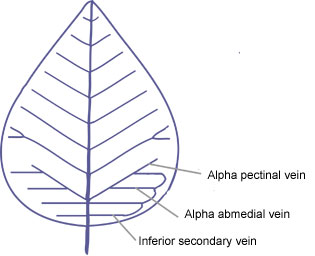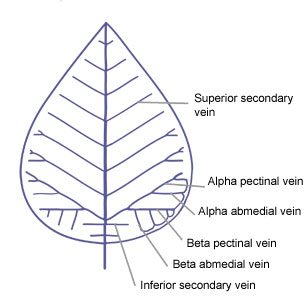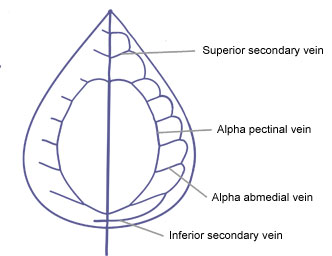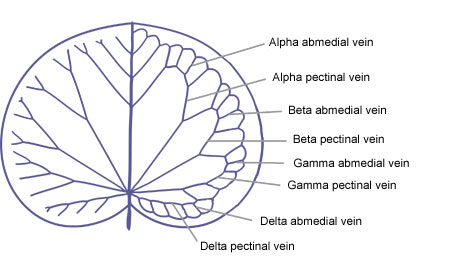Systematics
VenationCretaceous angiosperms exhibit character combinations that today are found straddling the boundaries normally recognized for extant families and even orders. Associated with this, Late Cretaceous angiosperm leaves display a high degree of morphological plasticity. These two factors have contributed greatly to the confused state of Cretaceous angiosperm systematics for both pollen and leaves. In the case of leaves an additional problem has been the inconsistent descriptions and often inadequate illustrations of foliar architectures. The continuous nature of the architectural variation exhibited by these leaves, and the constraints imposed by restrictive terminologies, have often forced similar leaves to be assigned to markedly different taxa. Subtle relationships, which are necessary for detailed evolutionary studies, may therefore have been masked. In an attempt to devise a more objective terminology for venation based on branching pattern rather than subtle gradations in, for example, vein thickness, the pectinal vein terminology was devised (Spicer, 1986b). Pectinal Vein TerminologyA pectinal vein is the lateral vein (or veins) that departs from the midvein (or another pectinal) of a leaf and supports the greatest number of subsidiary branches abmedially (abmedially means facing away from the midvein). The stylized vein diagrams below show unlooped (craspedodromous) pectinal abmedial veins on the left side and looped (brochidodromous) abmedials on the right side. Figures (a) and (b) illustrate strong and weak pectinals respectively. Pectinal veins may be basal or suprabasal in origin and bear admedial (facing towards the midvein) branches in addition to the abmedials. Pectinal veins, once recognized, may be used as a point of reference. The secondary veins originating from the midvein apical to the pectinals are referred to as superior secondary veins, while those arising from the midvein basal to the pectinals are inferior secondaries (a).
More than one pair of pectinals may be present in a leaf. Several pectinals may radiate from a single point, or abmedials of a pectinal vein may themselves support a series of abmedial branches. In either case the most apical pectinal is termed the alpha-pectinal and subsequent Greek letters are assigned sequentially to the more basal pectinals (c, e).
Pectinal veins may curve inwards to converge with the midvein near the apex (fusion may not necessarily take place) (d). Secondary veins may be enclosed by the pectinals or be superior or inferior to them.
|

